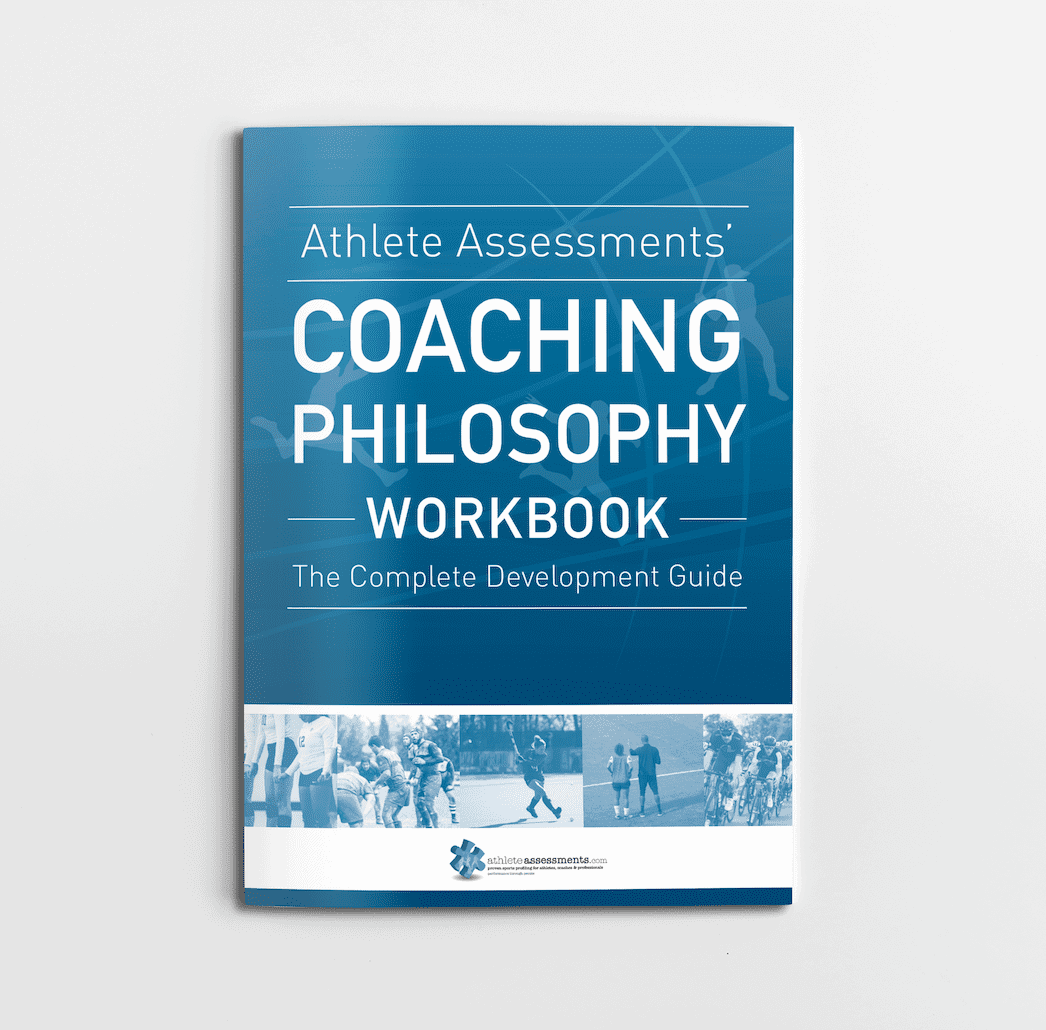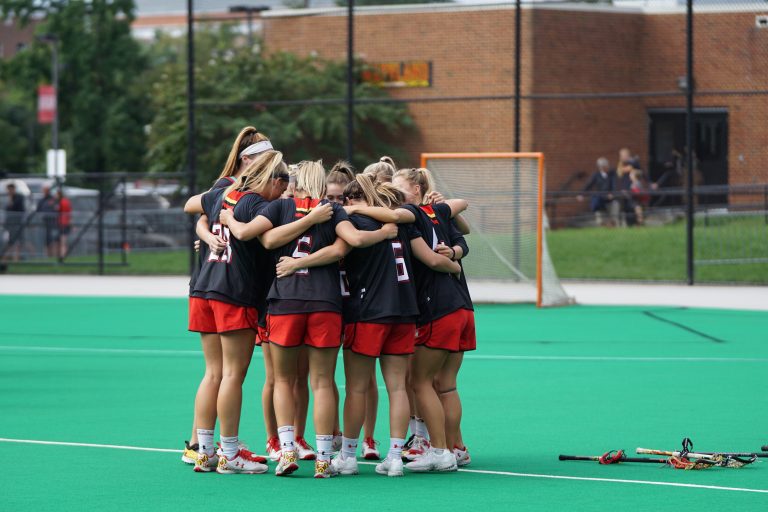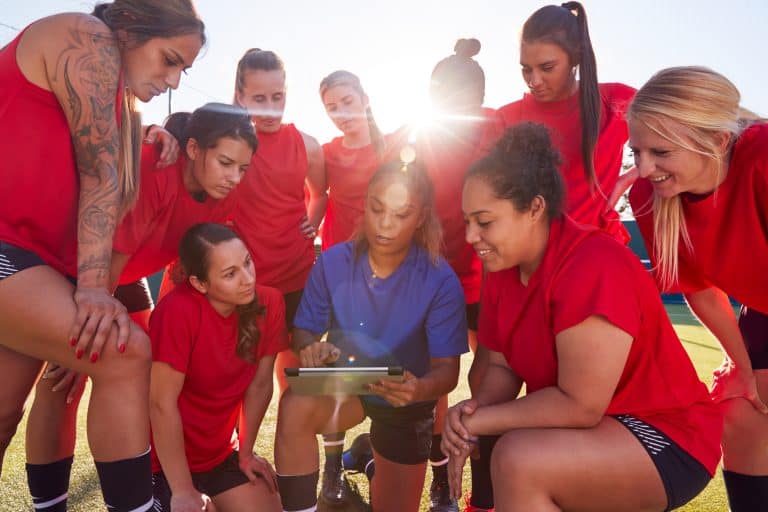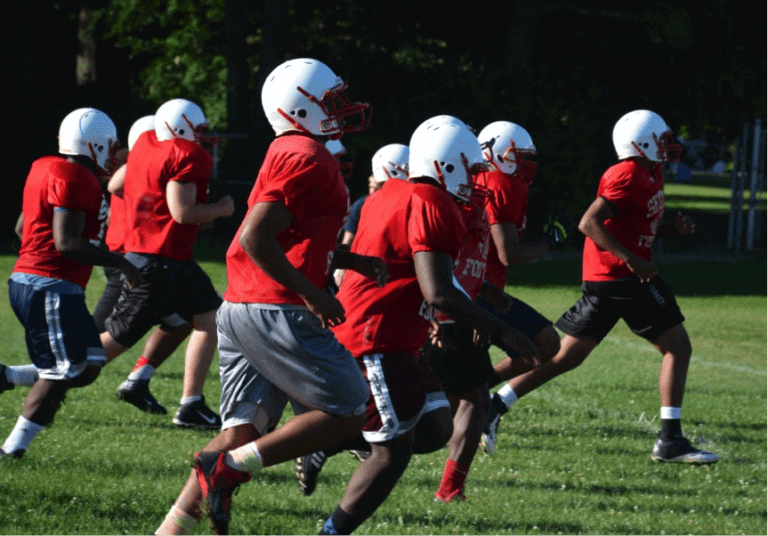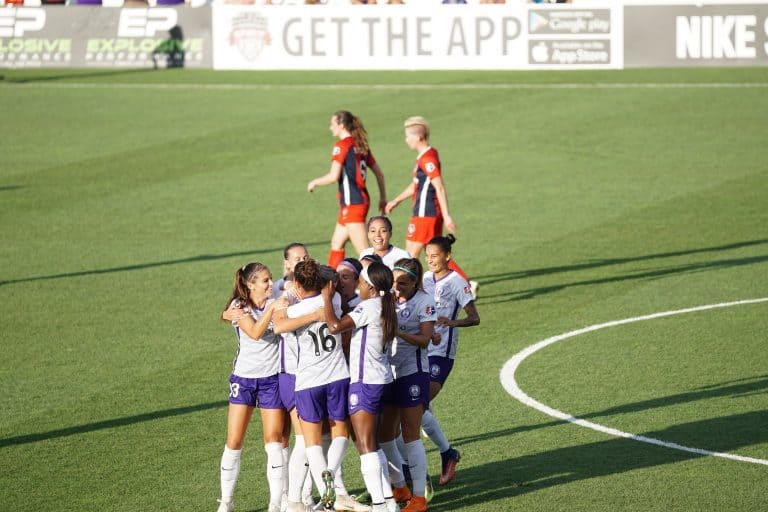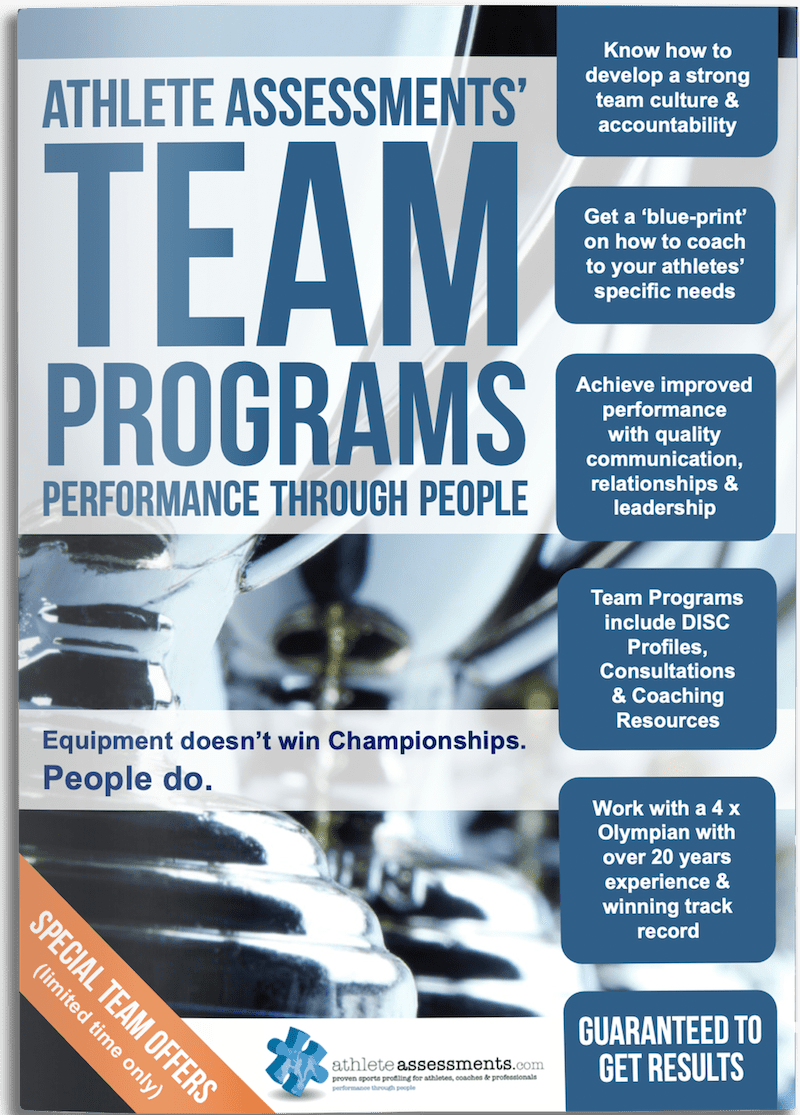In the competitive realm of sports, the concept of turnaround leadership stands as a captivating challenge, especially when newly appointed coaches are tasked with transforming struggling teams into champions.
We recently came across an infographic on the FSU Coach Blog, which referenced a recent qualitative study conducted by Scott Westfall of Adrian College (2019), which sought to examine how 11 American high school football coaches delivered remarkable turnarounds within their respective programs, in an impressively short period of time. The coaches who participated in the study achieved a winning record in an average of 1.73 years after taking over the program, and secured a spot in the state playoffs within less than 2 years. In this article, we uncover the key insights from Westfall’s (2019) study to define the steps for turning around an unsuccessful program.
Defining your Coaching Philosophy
Various coaches in the study noted how defining their coaching philosophy helped drive their turnaround efforts. ‘Educational athletics’ emerged as a consistent theme, which Coach #4 in the study elaborated on,
“I have the responsibility to develop young men into better people. Whether it’s in their future job, being better fathers or better husbands, we try and teach football through life experiences. We’re coaching football but we’re also doing some bigger things that teach kids life skills.”
Another, Coach #10 affirmed,
“You’re an educator and that’s number one. Your players are a reflection of you and that’s character-wise, what you teach football-wise, what you stress academically, and how you want your kids to be in the classroom and the community. As a coach, you are an educator—and that’s not just X’s and O’s.”
(Westfall, 2019)
Ultimately, a coach’s philosophy serves as the guiding principles and values that not only shape a team’s culture, but also play a pivotal role in orchestrating a successful turnaround. In times of adversity or underperformance, a coherent coaching philosophy provides a roadmap for instilling resilience, fostering a positive mindset, and building a cohesive team dynamic. Additionally, it serves as a compass, guiding the coach in making strategic decisions, motivating athletes, and fostering a collective sense of purpose. A strong coaching philosophy in turnaround leadership ensures that there is clarity in goals, effective communication, and a shared commitment to overcoming challenges. Resources like the Athlete Assessments Coaching Philosophy Workbook can play a crucial role in this transformative process, supporting coaches to systematically address areas of improvement, identify strengths, and foster a culture of continuous learning within the team.
Specifically, when coupled with DISC Profiling created specifically for sport, the Coaching Philosophy Workbook becomes a powerful combination for coaches seeking comprehensive insights into their athletes’ behavioral tendencies. A coaching philosophy lays the foundation for team values and communication strategies, while DISC Profiling offers a nuanced understanding of individual and collective behavioral preferences.
Ultimately, a coach’s philosophy serves as the guiding principles and values that not only shape a team’s culture, but also play a pivotal role in orchestrating a successful turnaround. In times of adversity or underperformance, a coherent coaching philosophy provides a roadmap for instilling resilience, fostering a positive mindset, and building a cohesive team dynamic. Additionally, it serves as a compass, guiding the coach in making strategic decisions, motivating athletes, and fostering a collective sense of purpose. A strong coaching philosophy in turnaround leadership ensures that there is clarity in goals, effective communication, and a shared commitment to overcoming challenges. Resources like the Athlete Assessments Coaching Philosophy Workbook can play a crucial role in this transformative process, supporting coaches to systematically address areas of improvement, identify strengths, and foster a culture of continuous learning within the team.
Specifically, when coupled with DISC Profiling created specifically for sport, the Coaching Philosophy Workbook becomes a powerful combination for coaches seeking comprehensive insights into their athletes’ behavioral tendencies. A coaching philosophy lays the foundation for team values and communication strategies, while DISC Profiling offers a nuanced understanding of individual and collective behavioral preferences.
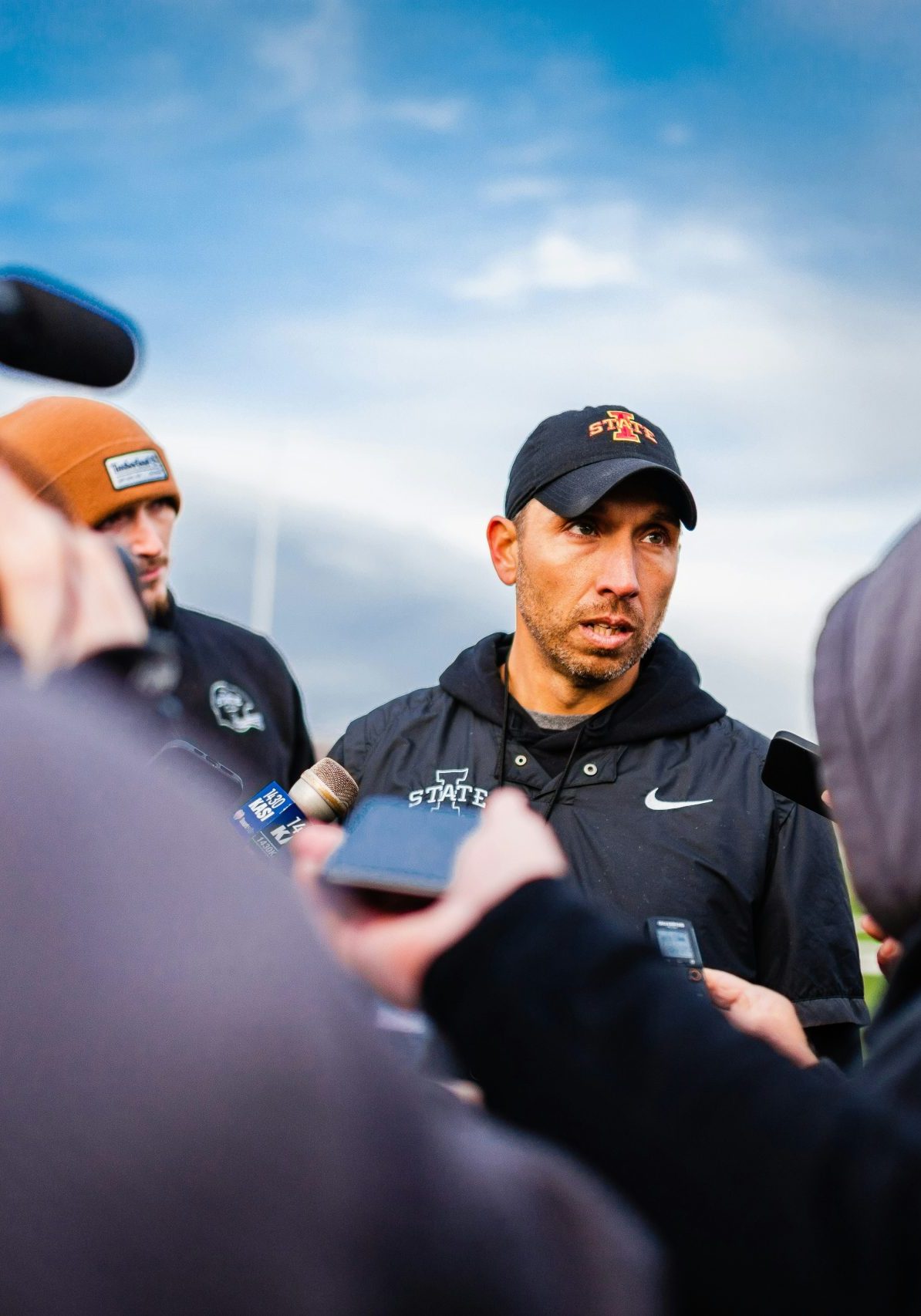
Establishing a Turnaround Vision and Plan
Each coach in Westfall’s (2019) study had a specific vision and plan for turning around their respective program, which was informed by their individual Coaching Philosophies. Specifically, two themes were determined to be the most important which were, ‘winning games’ and ‘developing quality human beings.’ Coach #3 notably emphasized the stark reality that winning is fundamental to a coach’s longevity, stating,
“If you don’t win, you aren’t around very long.”
Meanwhile, Coach #7 passionately declared their ambition to be among the top teams, recognizing the challenges, but steadfast in the pursuit. However, equally crucial to the coaches was the development of their players off the field.
Several of the coaches highlighted a shift in focus towards holistic development, emphasizing the connection between on-field success and academic excellence. The coaches recognized that fostering strong coach-athlete relationships and implementing off-season training programs were pivotal components of their turnaround plans.
Establishing a Turnaround Vision and Plan
Each coach in Westfall’s (2019) study had a specific vision and plan for turning around their respective program, which was informed by their individual Coaching Philosophies. Specifically, two themes were determined to be the most important which were, ‘winning games’ and ‘developing quality human beings.’ Coach #3 notably emphasized the stark reality that winning is fundamental to a coach’s longevity, stating,
“If you don’t win, you aren’t around very long.”
Meanwhile, Coach #7 passionately declared their ambition to be among the top teams, recognizing the challenges, but steadfast in the pursuit. However, equally crucial to the coaches was the development of their players off the field.
Several of the coaches highlighted a shift in focus towards holistic development, emphasizing the connection between on-field success and academic excellence. The coaches recognized that fostering strong coach-athlete relationships and implementing off-season training programs were pivotal components of their turnaround plans.

Developing and Maintaining Coach-Athlete Relationships
So, how do you develop an effective coach-athlete relationship?
Ultimately, relationships thrive on understanding, shared experiences, trust, and predictability. Investing time both within and outside the training environment can yield significant benefits. Recognizing and seizing opportunities for connection is crucial, and sometimes actively creating these opportunities becomes essential to ensure a supportive and cohesive atmosphere extends beyond the competitive and training arenas.
As Coach #4 in the study elaborated,
“You build the relationships by spending time with the kids. It’s about getting to know the kids beyond just being your player. What makes them tick? How are their grades? What’s going on in their family life? Because a lot of times we have to get through the shell so they will share. When they trust you, they’ll share things that maybe are happening that maybe aren’t good and then you can help.”
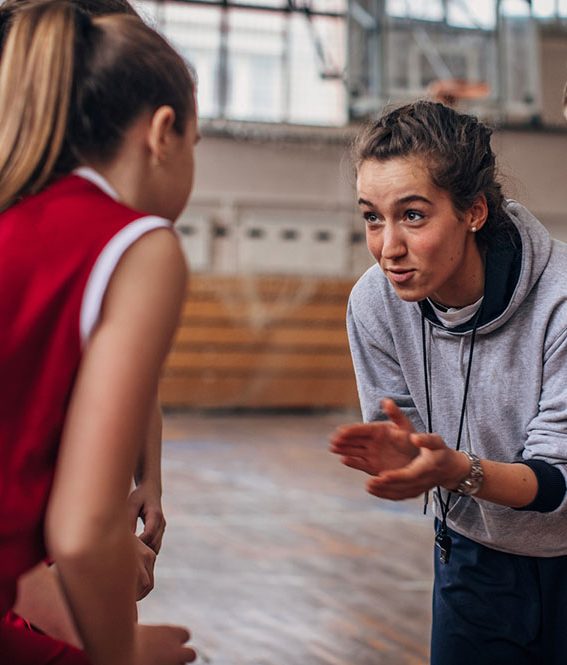
Developing and Maintaining Coach-Athlete Relationships
So, how do you develop an effective coach-athlete relationship?
Ultimately, relationships thrive on understanding, shared experiences, trust, and predictability. Investing time both within and outside the training environment can yield significant benefits. Recognizing and seizing opportunities for connection is crucial, and sometimes actively creating these opportunities becomes essential to ensure a supportive and cohesive atmosphere extends beyond the competitive and training arenas.
As Coach #4 in the study elaborated,
“You build the relationships by spending time with the kids. It’s about getting to know the kids beyond just being your player. What makes them tick? How are their grades? What’s going on in their family life? Because a lot of times we have to get through the shell so they will share. When they trust you, they’ll share things that maybe are happening that maybe aren’t good and then you can help.”

Understanding what each member of the team brings to the table will allow them to take ownership of their actions and make adjustments to achieve the desired responses. Once coaches can understand the way athletes within their program prefer to absorb and relay information, they will be in a better position to adapt or momentarily change the way they deliver their messages to achieve a more effective result. Adapting simply means adjusting the way we interact with an individual to communicate more effectively, and improve their understanding of what we’re saying, with the ultimate goal of wanting them to want to act on it.
The key to maintaining coach-athlete relationships within a program lies in long-term commitment – maintaining an open dialogue, adapting strategies where necessary, and demonstrating genuine care for athletes’ holistic development. Through these efforts, coaches can ensure enduring, impactful coach-athlete relationships that extend beyond the playing field and contribute to a positive and sustainable team culture.
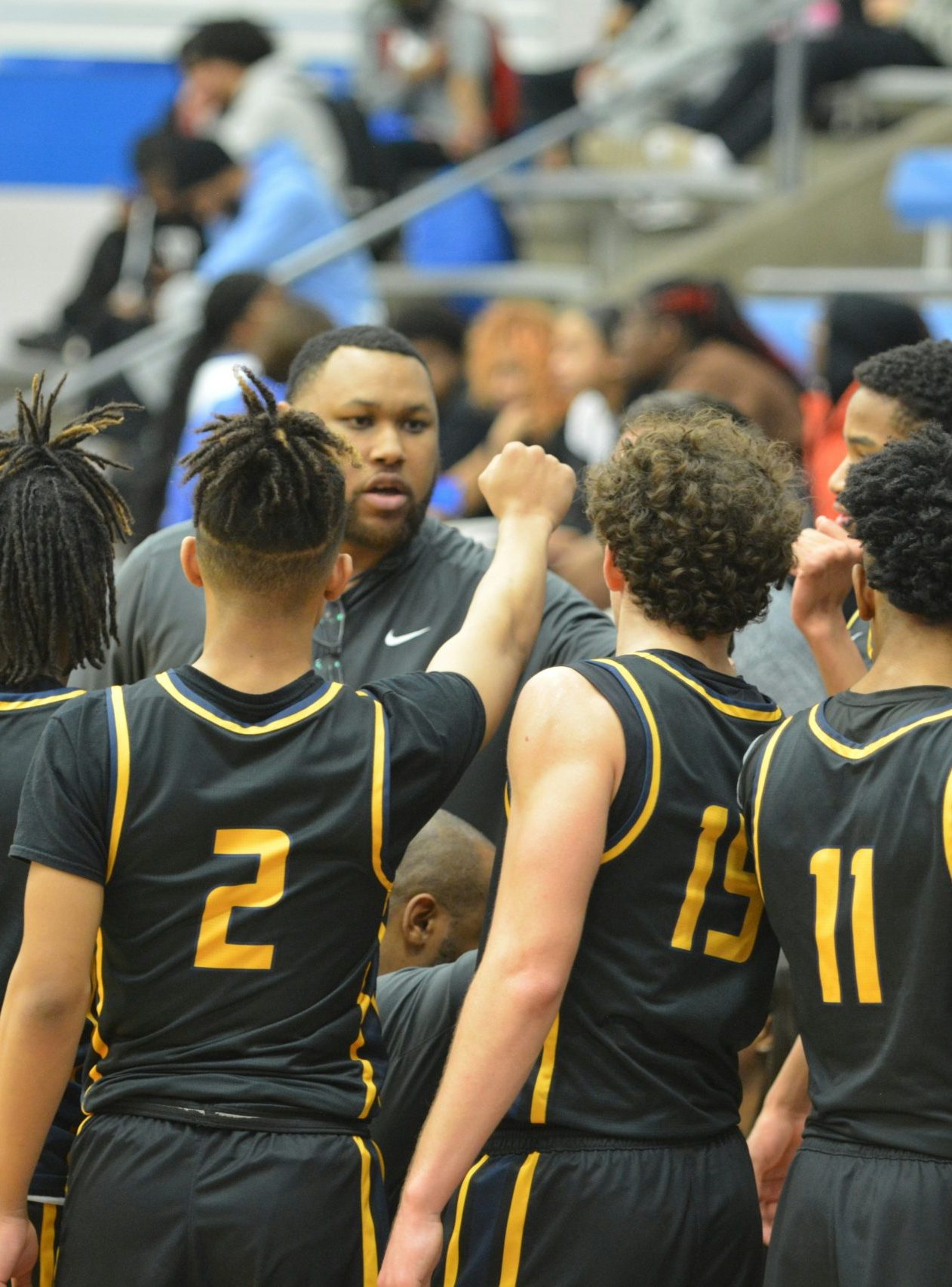
Generating Buy-in
Coaches noted that for their turnaround vision and plan to be implemented, they needed to generate player buy-in, support, and follow through. However, several coaches indicated that their players did not immediately buy-in because they needed to experience success before committing to a program turnaround. According to Westfall (2019), the five key strategies that emerged as being influential in generating buy in were, ‘team activities,’ ‘building relationships,’ ‘selling the vision,’ ‘previous expertise,’ and ‘quality assistant coaching.’ Coach #5 elaborated on their approach saying,
“You must help them understand ‘the why’ behind what you’re doing—the process. Because nowadays, especially, authority doesn’t always mean they are going to do it. They have to understand why, or they aren’t going to do it. Or they will do it and fight you on it—they will do it begrudgingly or half-heartedly.”
Establishing a strong coach-athlete relationship is critical and at Athlete Assessments, our work with teams around generating buy-in centres around our Involvement, Ownership, Accountability model.

Generating Buy-in
Coaches noted that for their turnaround vision and plan to be implemented, they needed to generate player buy-in, support, and follow through. However, several coaches indicated that their players did not immediately buy-in because they needed to experience success before committing to a program turnaround. According to Westfall (2019), the five key strategies that emerged as being influential in generating buy in were, ‘team activities,’ ‘building relationships,’ ‘selling the vision,’ ‘previous expertise,’ and ‘quality assistant coaching.’ Coach #5 elaborated on their approach saying,
“You must help them understand ‘the why’ behind what you’re doing—the process. Because nowadays, especially, authority doesn’t always mean they are going to do it. They have to understand why, or they aren’t going to do it. Or they will do it and fight you on it—they will do it begrudgingly or half-heartedly.”
Establishing a strong coach-athlete relationship is critical and at Athlete Assessments, our work with teams around generating buy-in centres around our Involvement, Ownership, Accountability model.
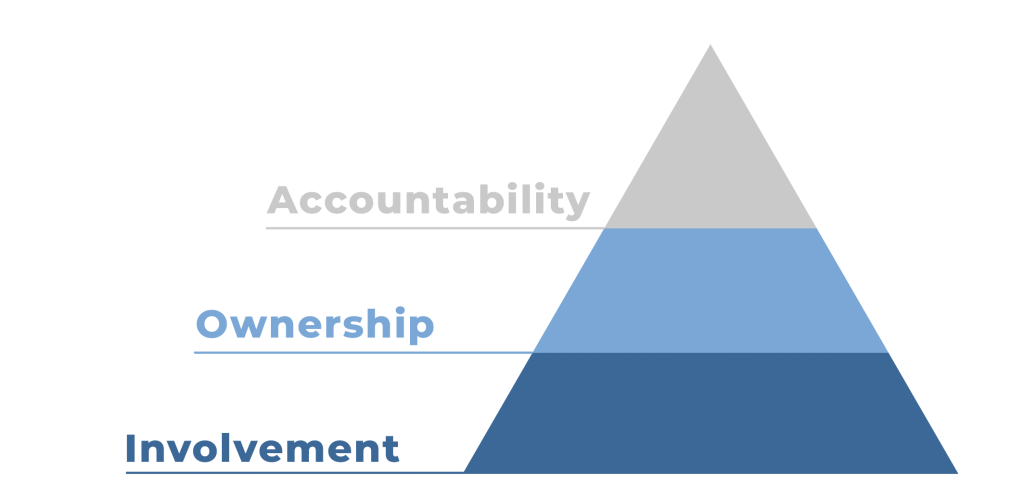
In the process of program turnaround, it’s often useful for coaches to ask themselves, ‘what can I do to better include our athletes in what we are asking them to do, or the outcomes we want them the work towards?’
One way to increase involvement involves reviewing the standards and core values the program lives. Are they representative of what the program currently looks like and those in it? Simply going through the process of reviewing these factors as a team facilitates inclusion and involvement for the current players.
Overall ownership is underpinned by involvement. Coaches can increase their athlete’s sense of ownership by accommodating for their contribution, whether that be in competition analysis, or the creation and evaluation of standards. The use of DISC Profiling, specifically the AthleteDISC Profile, can play a pivotal role here in understanding how each member of the team prefers to contribute and what principles they are motivated by (whether that be results, praise, a supportive environment, or structured goals). When paired with the coach undertaking the CoachDISC Profile and used as part of the team’s development, coaches can get an overall picture of their team’s dynamic and how that informs their culture.
Accountability is the key to a sustainably successful program, and in creating and maintaining the standards the team needs to live. As part of this process, coaches should question the program’s environment and culture in the context of, ‘are we creating an environment that promotes accountability?’ and ‘do our athletes hold themselves and each other accountable to performance standards, or look for other factors or people to blame when underperforming?’
Additionally, every team will experience the challenge of new members. Some programs introduce new cohorts every one to two years, and the way these new team members are inducted and included within the overall team dynamic will impact the level of ownership they develop. Hence, for a coach, maintaining a continuous awareness of the team’s dynamic and understanding how each team member will ‘buy in’ is crucial. (Hint! Utilizing DISC can be instrumental in gaining insights into this aspect.) This preparation is not only likely to maximize a positive response from introductory athletes but will also aid in consistent standard implementation and collective buy in.
Make Change Stick
In turning around an unsuccessful program, navigating through adversity is a constant challenge. Early on, teams may grapple with mental and parental hurdles, but as success builds, a different kind of obstacle emerges—the lurking threat of complacency. The journey to the top is often accompanied by a collective amnesia about the hard work and sacrifices that paved the way. This forgetfulness, coupled with potentially new team members expecting success merely by donning the uniform, sets the stage for the final, crucial step in the turnaround process; ‘Make Change Stick.’
So, what exactly does this look like?
As Westfall (2019) highlights in their study, resisting complacency involves actively practicing three key things:
- The establishment of new goals and benchmarks
- Revisiting team or program values
- Celebrating the ‘little’ wins.
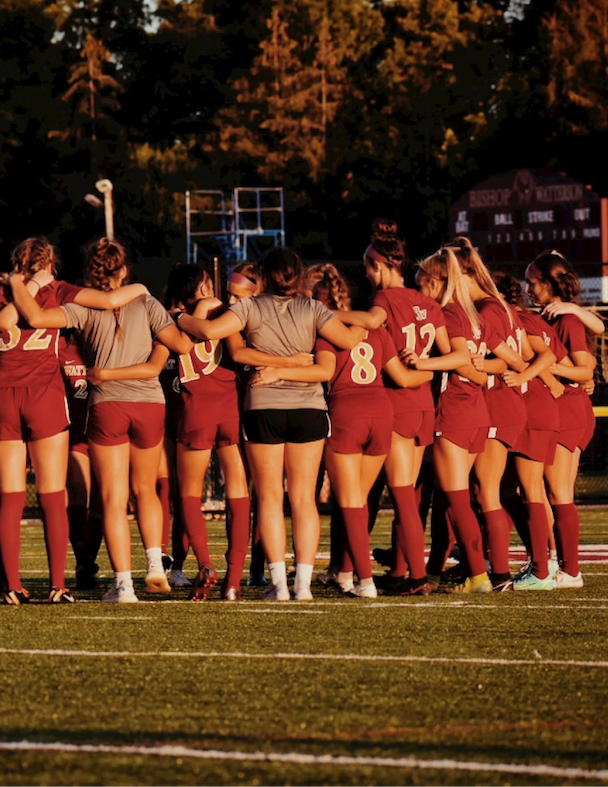
Make Change Stick
In turning around an unsuccessful program, navigating through adversity is a constant challenge. Early on, teams may grapple with mental and parental hurdles, but as success builds, a different kind of obstacle emerges—the lurking threat of complacency. The journey to the top is often accompanied by a collective amnesia about the hard work and sacrifices that paved the way. This forgetfulness, coupled with potentially new team members expecting success merely by donning the uniform, sets the stage for the final, crucial step in the turnaround process; ‘Make Change Stick.’
So, what exactly does this look like?
As Westfall (2019) highlights in their study, resisting complacency involves actively practicing three key things:
- The establishment of new goals and benchmarks
- Revisiting team or program values
- Celebrating the ‘little’ wins.
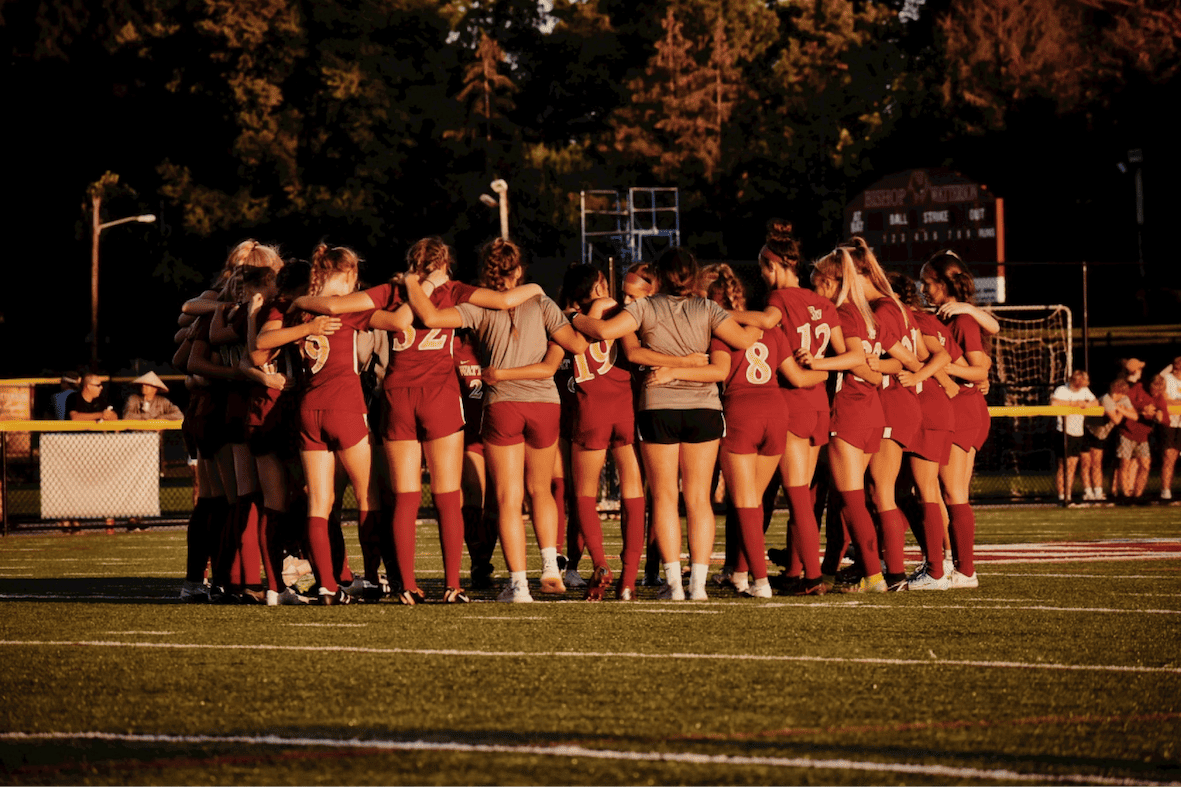
During this time, it is often useful for coaches to revisit their Coaching Philosophy (hint! Athlete Assessments’ Coaching Philosophy Workbook is a great resource for coaches to consistently reflect on their approach and vision, as well as the behaviors that will best contribute to successful outcomes).
Encouraging involvement from the team to reflect and revisit on the established values, will ultimately invite accountability in upholding collective standards (recall our Involvement, Ownership, Accountability Model). Additionally, consistently incorporating people-centric tools such as DISC Profiling into every aspect of a team’s preparation, performance, and recovery will serve as a reminder of the unique behaviors and strengths each team member brings, and the importance of valuing difference.
The idea of celebrating ‘little’ wins goes beyond conventional notions of victory and results. If you’re familiar with our work at Athlete Assessments, you may know the question we often pose to teams we work with is: ‘What does Winning look like for you?’
In this context, ‘Winning’ extends beyond success on the scoreboard and can include intangibles such as ensuring the team is communicating on every play, everyone eats together at meal breaks, and so on. The reframing of this question essentially invites a deeper exploration of success, emphasizing the significance of incremental achievements and personal growth, as ‘Winning’ will ultimately look different for each team. Whether it’s mastering a new skill, demonstrating enhanced teamwork, or showing resilience in the face of adversity; recognizing and commemorating these smaller triumphs becomes a powerful motivator. It fosters a positive team culture and reinforces the idea that success is a continuous journey rather than a destination. By expanding the definition of winning, teams can stay engaged, motivated, and less susceptible to complacency, maintaining a focus on continuous improvement and collective excellence.
Where to from here?
As these key insights from Westfall’s study demonstrate, even the most unfavorable conditions of a program can be overcome with the right planning, implementation, and upholding consistency. In our experience working with teams, it is more often those who remain in a constant state of improvement, adapting to challenges with resilience, revisiting values, setting new goals, celebrating both small and significant victories, and embracing the diversity within their ranks, that not only succeed in program turnaround but also establish a record of sustained excellence. As we know, the journey toward success is not a linear path, however by prioritizing continuous growth and learning, teams not only overcome adversity but build a foundation for long-term success, ensuring that the transformative turnaround becomes a stepping stone to even greater achievements in the future.Research article: Westfall, S. (2019). Worst to First: Turnaround Leadership Through the Lens of Successful High School Football Coaches. International Sport Coaching Journal, 7(1), 1-12. http://dx.doi.org/10.1123/iscj.2019-0076
Recommended Articles
Vice President of Mental Health and Wellness for the WTA and Founder of Ahlgren Bedics Consulting, LLC, Dr. Becky Ahlgren Bedics unpacks the how-to behind empowering athletes to lead in roles that complement their natural style.
As coaches, challenges are inevitable, but that doesn’t always make them easier to deal with when they do arise. So, what are the most common coaching challenges? We explore eight potentials, why they occur, and the best strategies to implement when managing them.
The coach-athlete relationship, a research backed non-negotiable when it comes to getting the best and sustained performance out of your athletes.
Creating and maintaining an effective team culture is critical to sustained success. So, if we define culture simply as ‘the way we behave around here’, we need to determine what is acceptable and what is not? But then as a coach, how do you sustain a culture or how do you deal with an athlete who acts in a way that opposes the culture you want?


